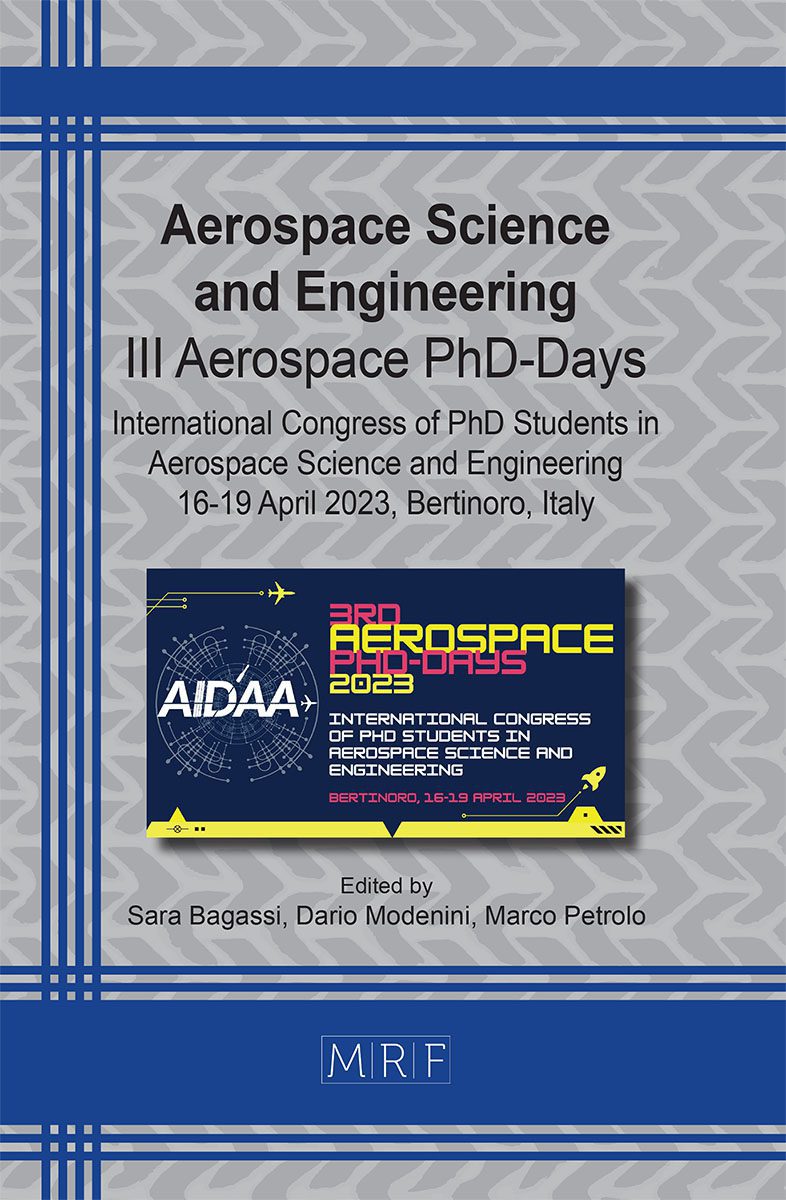Analysis of composite beams, plates, and shells using Jacobi polynomials and NDK models
Daniele Scano
download PDFAbstract. In this work, hierarchical Jacobi-based expansions are explored for the static analysis of multilayered beams, plates, and shells as structural theories as well as shape functions. Jacobi polynomials, denoted as P_p^((γ,θ) ), belong to the family of classical orthogonal polynomials and depend on two scalars parameters and , with p being the polynomial order. Regarding the structural theories, layer wise and equivalent single-layer approaches can be used. It is demonstrated that the parameters and of the Jacobi polynomials are not influential for the calculations. These polynomials are employed in the framework of the Carrera Unified Formulation (CUF), which allows to generate of finite element stiffness matrices straightforwardly. Furthermore, Node-dependent Kinematics is used in the CUF framework to build global-local models to save computational costs and obtain reliable results simultaneously.
Keywords
Finite Element Method, Beam Models, Plate Models, Shell Models, Jacobi Polynomials, Node-Dependent Kinematics, Carrera Unified Formulation
Published online 9/1/2023, 8 pages
Copyright © 2023 by the author(s)
Published under license by Materials Research Forum LLC., Millersville PA, USA
Citation: Daniele Scano, Analysis of composite beams, plates, and shells using Jacobi polynomials and NDK models, Materials Research Proceedings, Vol. 33, pp 148-155, 2023
DOI: https://doi.org/10.21741/9781644902677-22
The article was published as article 22 of the book Aerospace Science and Engineering
![]() Content from this work may be used under the terms of the Creative Commons Attribution 3.0 license. Any further distribution of this work must maintain attribution to the author(s) and the title of the work, journal citation and DOI.
Content from this work may be used under the terms of the Creative Commons Attribution 3.0 license. Any further distribution of this work must maintain attribution to the author(s) and the title of the work, journal citation and DOI.
References
[1] E. Carrera, M. Cinefra, M. Petrolo, and E. Zappino. Finite element analysis of structures through unified formulation. John Wiley & Sons, 2014.https://doi.org/10.1002/9781118536643
[2] L. Euler. Methodus inveniendi lineas curvas maximi minimive proprietate gaudentes sive solutio problematis isoperimetrici latissimo sensu accepti, volume 1. Springer Science & Business Media, Berlin, Germany, 1952.
[3] S.P. Timoshenko. On the transverse vibrations of bars of uniform cross section. Philosophical Magazine, 43:125-131, 1922.https://doi.org/10.1080/14786442208633855
[4] E. Carrera and G. Giunta. Refined beam theories based on a unified formulation. International Journal of Applied Mechanics, 02(01):117-143, 2010.https://doi.org/10.1142/S1758825110000500
[5] A. Pagani, E. Carrera, R. Augello, and D. Scano. Use of Lagrange polynomials to build refined theories for laminated beams, plates and shells. Composite Structures 2021;276.https://doi.org/10.1016/j.compstruct.2021.114505
[6] G. Kirchhoff. ¨Über das Gleichgewicht und die Bewegung einer elastischen Scheibe. Journal für die reine und angewandte Mathematik, 40:51-88, 1850.https://doi.org/10.1515/crll.1850.40.51
[7] E. Reissner. The effect of transverse shear deformation on the bending of elastic plates. Journal of Applied Mechanics, 12:69-77, 1945.https://doi.org/10.1115/1.4009435
[8] R.D. Mindlin. Influence of rotary inertia and shear on flexural motions of isotropic, elastic plates. Journal of Applied Mechanics-transactions of the ASME, 18:31-38, 1951.https://doi.org/10.1115/1.4010217
[9] E. Carrera. Developments, ideas, and evaluations based upon Reissner’s Mixed Variational Theorem in the modeling of multilayered plates and shells. Appl. Mech. Rev., 54(4):301-329, 2001.https://doi.org/10.1115/1.1385512
[10] E. Carrera. Evaluation of layerwise mixed theories for laminated plates analysis. AIAA J 1998;36(5):830-9.https://doi.org/10.2514/2.444
[11] E. Carrera, R. Augello, A. Pagani, and D. Scano. Refined multilayered beam, plate and shell elements based on Jacobi polynomials. Composite Structures, 304:116275, 2023.https://doi.org/10.1016/j.compstruct.2022.116275
[12] M. Abramowitz and I.A. Stegun. Handbook of Mathematical Functions with Formulas, Graphs, and Mathematical Tables. Dover Publications, 1964.
[13] B. Szabo, A. Duester, and E. Rank. The p-Version of the Finite Element Method, Chapter 5. John Wiley & Sons, 2011.
[14] E. Zappino, G. Li, A. Pagani, E. Carrera, and A.G. de Miguel. Use of higher-order Legendre polynomials for multilayered plate elements with node-dependent kinematics. Composite Structures, 202:222-232, 2018. Special issue dedicated to Ian Marshall.https://doi.org/10.1016/j.compstruct.2018.01.068
[15] A. Pagani, A.G. de Miguel, M. Petrolo, and E. Carrera. Analysis of laminated beams via unified formulation and Legendre polynomial expansions. Composite Structures, 156:78- 92, 2016. 70th Anniversary of Professor J. N. Reddy.https://doi.org/10.1016/j.compstruct.2016.01.095
[16] E. Carrera, M. Cinefra, and G. Li. Refined finite element solutions for anisotropic laminated plates. Composite Structures, 183:63-76, 2018. In honor of Prof. Y. Narita.https://doi.org/10.1016/j.compstruct.2017.01.014
[17] E. Carrera and E. Zappino. Analysis of complex structures coupling variable kinematics one-dimensional models. In: ASME 2014 International Mechanical Engineering Congress and Exposition. American Society of Mechanical Engineers; 2014.https://doi.org/10.1115/IMECE2014-37961
[18] E. Zappino, G. Li, A. Pagani, and E. Carrera. Global-local analysis of laminated plates by node-dependent kinematic finite elements with variable ESL/LW capabilities. Composite Structures 2017; 172:1-14.https://doi.org/10.1016/j.compstruct.2017.03.057
[19] G. Li, E. Carrera, M. Cinefra, A. G. de Miguel, A. Pagani, and E. Zappino. An Adaptable Refinement Approach for Shell Finite Element Models Based on Node-Dependent Kinematics, Composite Structures, 2018.https://doi.org/10.1016/j.compstruct.2018.10.111
[20] K.J. Bathe. Finite Element Procedure. Prentice hall, Upper Saddle River, New Jersey, USA, 1996.
[21] N.J. Pagano. Exact solutions for composite laminates in cylindrical bending. Journal of Composite Materials, 3(3):398-411, 1969.https://doi.org/10.1177/002199836900300304
[22] E. Carrera, G. Giunta, and M. Petrolo. A modern and compact way to formulate classical and advanced beam theories. Developments in Computational Structures Technology, 75-112, 2010.https://doi.org/10.4203/csets.25.4
[23] N. Ghazouani and R. El Fatmi. Higher order composite beam theory built on Saint-Venant’s solution. Part II-Built-in effects influence on the behavior of end-loaded cantilever beams. Composite Structures, 93(2): 567-581.https://doi.org/10.1016/j.compstruct.2010.08.023
[24] E. Carrera, M. Petrolo, and E. Zappino. Performance of CUF approach to analyze the structural behavior of slender bodies. Journal of Structural Engineering, 138(2):285-297, 2012.https://doi.org/10.1061/(ASCE)ST.1943-541X.0000402































